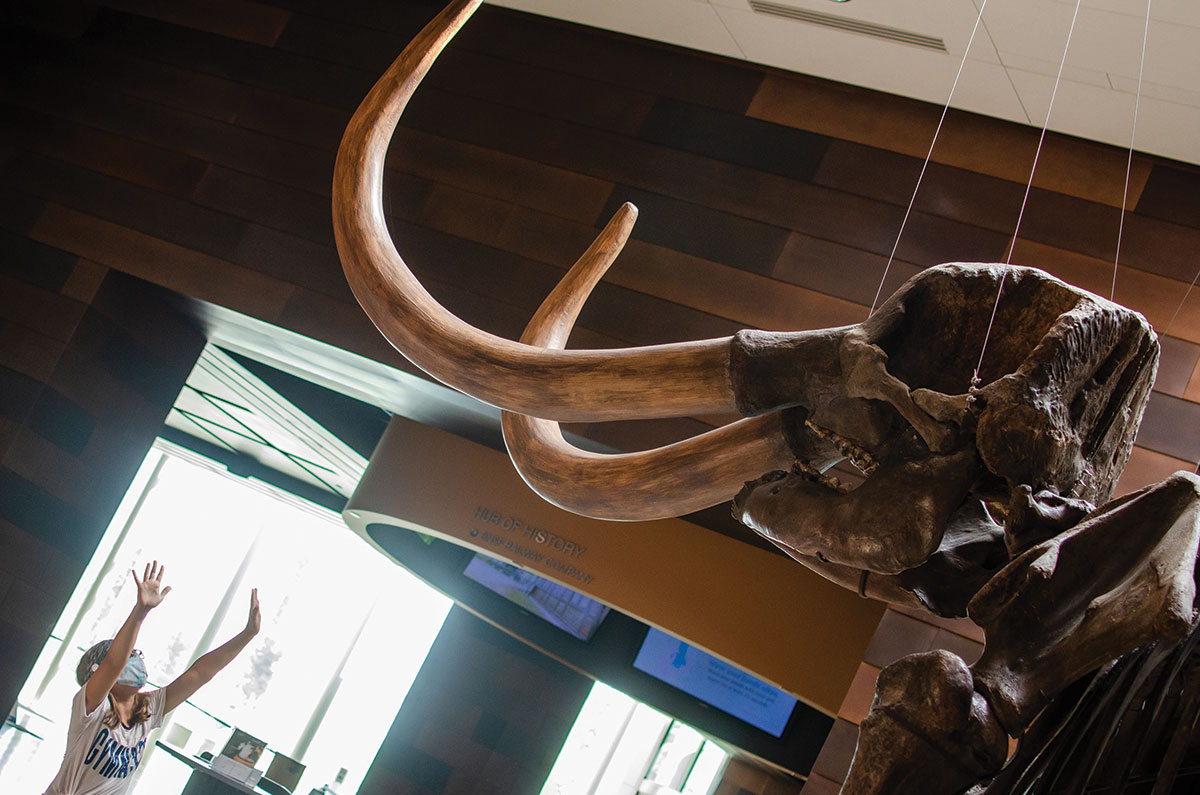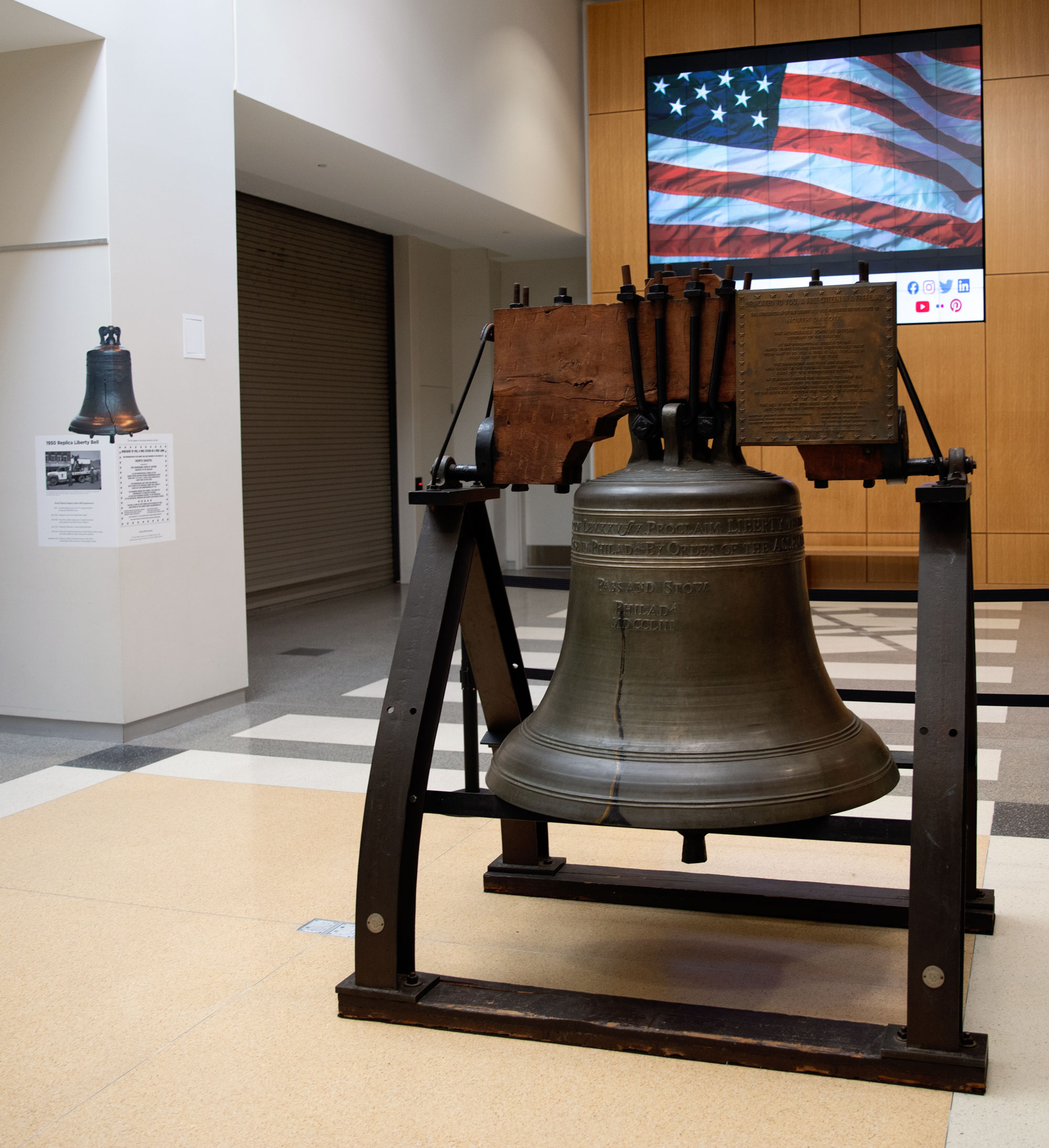The areas where north hallways intersect the Corridor of History feature iconic objects that bridge the galleries and reference changes in time. These items also serve as landmarks for our visitors, providing examples of the time period represented in each gallery. Scan the hallway and select the time period you wish to explore.
Dakota the Dinomummy

Dakota, one of only a handful of mummified hadrosaurs in the world, has been featured in national and international news reports because of its rare skin preservation. Unlike previous dinosaur mummies, which typically show skin impressions in rock, Dakota’s skin appears to be mostly intact with visible scales. This makes Dakota one of the most scientifically important dinosaurs ever found.
Dakota was a plant eater that weighed about four tons when it was living. Scientists believe it could run up to 28 miles per hour.
Mastodon

The icon bridging the Adaptation Gallery: Geologic Time and the Innovation Gallery: Early Peoples is the mastodon, which lived at the end of the ice age and was hunted by the early inhabitants of North Dakota. The mastodon was one of two elephant-like mammals that lived in North America 10,000 to 20,000 years ago.
Adult male mastodons were about 10 feet tall at the shoulder and weighed 8,000 pounds. Like its cousin, the woolly mammoth, mastodons were cold-climate animals covered with a coat of long, shaggy hair.
Learn the story of our mastodon.
Liberty Bell

This reproduction of the Liberty Bell was presented to the people of North Dakota. As the inspirational symbol of the United States Savings Bonds Independence Drive from May 15 to July 4, 1950, it was displayed in every part of this state.
This bell is one of fifty-three cast in France in 1950 and given to the United States government by a number of businesses.
Watch a video of the move from offsite storage to the museum.

